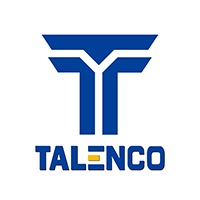When the solvent-free epoxy and polyurethane coatings appeared on the market, spray equipment manufacturers began to develop different types of two component airless spraying equipment. This was necessary because these kinds of products have a very short pot-life, perhaps only a few minutes. They are also too viscous, at room temperature, to atomise at normal pressures. Therefore the two component spray systems are often equipped with paint heaters. The fluid hoses are also insulated and kept as short as possible, to prevent the paint cooling before it reaches the spray gun. Only a few metres of fluid hose near the gun is left uninsulated and flexible, in order to make it possible to handle it.
Two component spraying outfits should always be supplied with feed pumps.Such ‘twin feed’ spray equipment saves material, because the two components only get mixed at the spray gun – up to then, they are separate, and therefore cannot react together. Because of this advantage, two component equipment is becoming more common even for the application of typical water-borne and solvent-borne epoxy and polyurethane paints, specially in painting shops where large volumes of paint are applied.These two component spraying machines are based on firm mixing ratios, where the proportion is achieved by two or three cylinders of certain volume. By changing the volume of the cylinders, it is possible to choose the mixing ratio e.g. 1:1, 1:2, 1:3 and 1:4. Some models of equipment have an adjustable mixing ratio, which can be regulated by adjusting the length of the cylinder stroke. In both types, the cylinders are powered by a pneumatic motor of high efficiency.Usually the two outer cylinders pump the so called ‘base’ component of the paint, with the middle cylinder pumping the ‘hardener’ component, which usually has a lower viscosity. In this way the strain on the equipment is divided more evenly. From these cylinders, the paint components move into separate hoses, and travel to a mixing unit at the spray gun, where they are mixed together and the curing reaction begins. Because the pot-life of the products is short, especially for solvent-free products where the components are heated, no hold-ups can be allowed during the application work without immediately flushing out the mixing unit with solvent.
Advantages of two component spraying equipment:
• the mixing ratio is always correct
• the mixing is uniform
• less need for cleaning solvents
• shorter cleaning time
• because the system is closed the solvent emissions are smaller
• improvement in working safety
• possibility to supply paint in bigger containers
• less waste of paint
• two component outfits are very economic in large scale, routine production, especially if the same colours are used continuously







 WhatsApp us
WhatsApp us